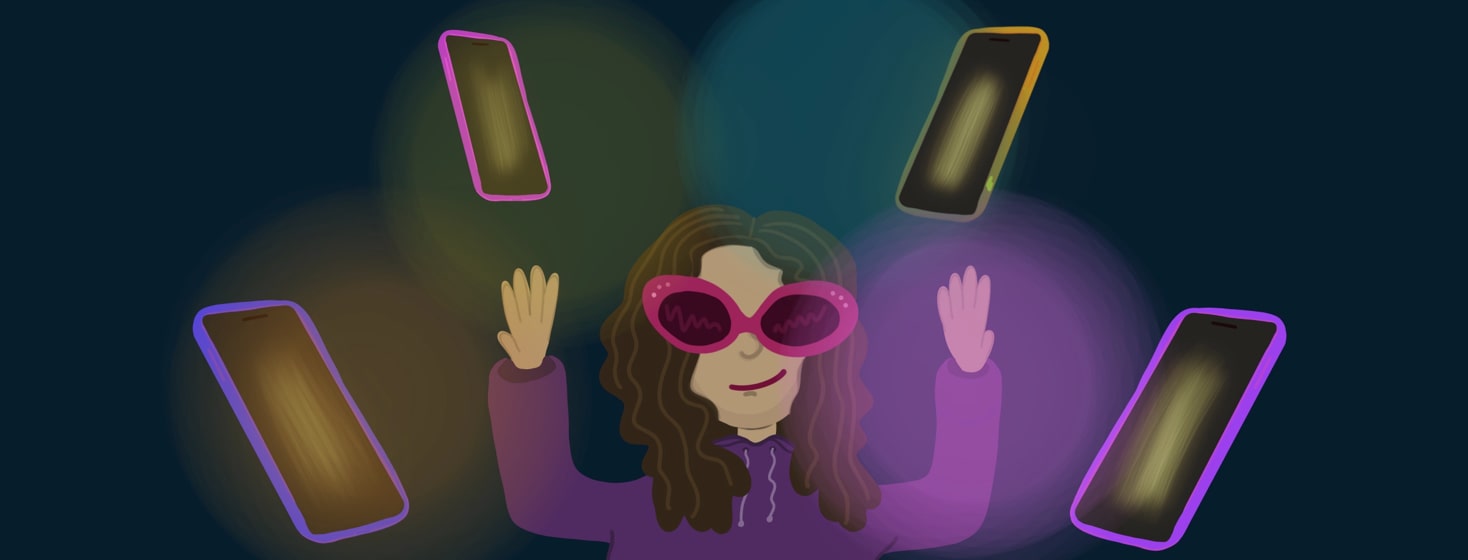No Screens, Please
Healthy sleep habits are important for people with and without sleep disorders like narcolepsy; from waking up and going to sleep at the same time every day (including weekends!), to limiting the amount of caffeine intake, and so on.
Back-lit screens, blue light, and melatonin production
In the current age of technology, there are electronic devices spread throughout our homes. Phones, laptops, tablets, TVs, game consoles, even smartwatches. These devices all have one thing in common: back-lit screens.
Back-lit screens emit short-wavelength light called “blue light.” Fluorescent and LED lights also emit this blue light, which has been shown to reduce or delay the natural production of melatonin. Being surrounded by this blue light in the evening can decrease feelings of sleepiness. When given the choice between a brightly lit room and a dimly lit room in the evenings, it is best to choose the latter.1
Reading before bed: a screen vs page study
In a 2014 study, researchers at Brigham and Women’s Hospital (BWH) compared the biological effects of reading an eBook on a light-emitting (LE) electronic device compared to reading a printed book.
The inpatient study lasted 2 weeks, with 12 people reading electronic books on an iPad for 4 hours before bedtime each night for 5 consecutive nights. Then, this process was repeated with printed books. The results showed that those reading on the iPad "took longer to fall asleep, were less sleepy in the evening, and spent less time in REM sleep."2
Additionally, the iPad readers had reduced secretion of melatonin, causing a delayed circadian rhythm of more than an hour. Participants who read from the iPad were less sleepy before bedtime, but sleepier and less alert the following morning after 8 hours of sleep.2
Experimenting with limiting my screen time
When I was diagnosed with narcolepsy in 2018, I experimented with cutting out all screen time 2 hours before bedtime. If my partner was watching TV, I would leave the room and read a book or doodle in my bullet journal. During this time I was journaling regularly, and I had even written about small changes I began to notice when turning off the screens at bedtime.
The biggest change I noticed was feeling more sleepy when it was getting close to my bedtime. I didn’t need to tell myself to go to bed, my body was ready for it. Laying in bed and reading a book to fall asleep became a relaxing routine.
My advice for managing screen time with narcolepsy
One of the best suggestions I can make is to clear your bedroom of electronics. As most people use their phone as an alarm clock, myself included, try keeping your phone away from your bed. I usually leave my phone just out of reach so if I wake up in the night I am not tempted to check the time.
Try turning on nighttime mode if you absolutely have to look at a screen in the evening hours. On my Macbook I downloaded a free application called “f.lux.” It warms up your computer display at night to match your indoor lighting and is easier on your eyes. There are also “blue blocker” glasses that help block the blue light from screens and are relatively cheap to get.

Join the conversation